Mechanical Trades Building
Introduction
Text-to-speech Audio
User Note: Follow the sidewalk towards the Seelye Center sign until you are in-between the Seelye Center and the Physical Plant (the previous entry). Feel free to walk down the hill to see the front entrance of the Physical Plant, which still bears the original name "Manual Arts". Look towards the parking lot between these two buildings to see the former site of the Mechanical Trades Building.
In 1941, the Mechanical Trades Building was constructed due to a generous gift from the W.E. Upjohn Unemployment Trustee Corporation for a new Aviation Building. The interior of the building was well-equipped to accommodate the airplane mechanics department and other vocational education, with various offices, classrooms, and spaces for airplane repair. In addition to these spaces, the department was also equipped with five airplanes for instructional use. The building underwent two major renovations, with the last remodeling for the university’s printing services. Between 1980 and 2001, the building was named the Brink Printing Services Building and printed most of Western’s publications.
See below for more information
Images
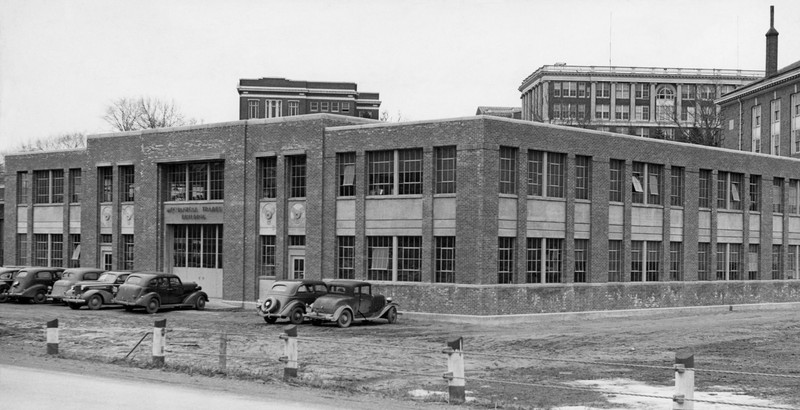
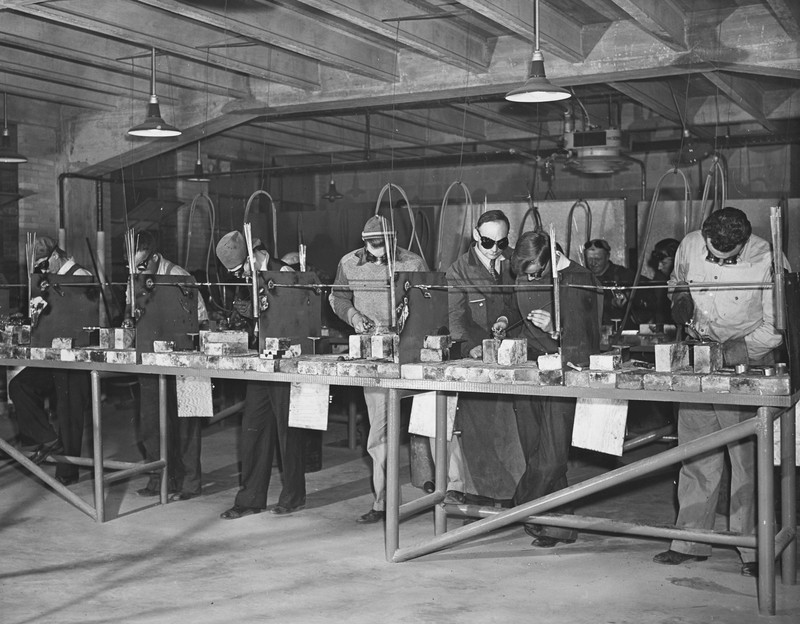
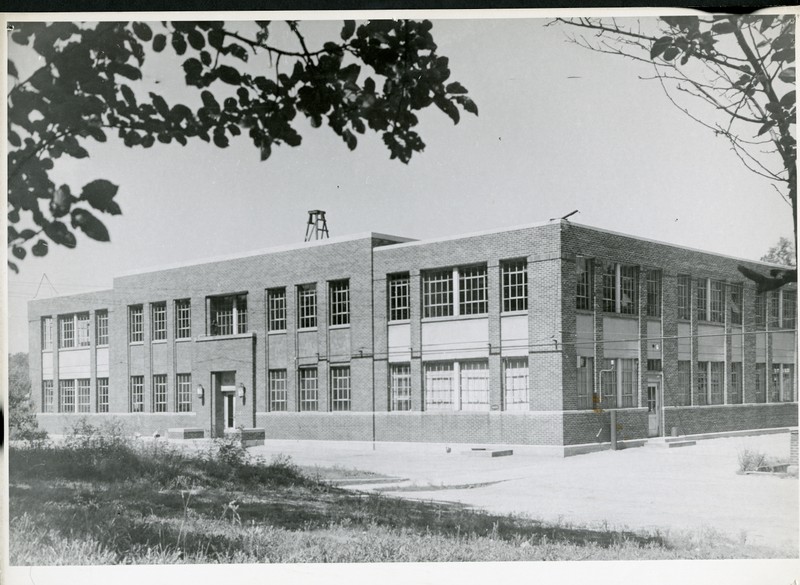
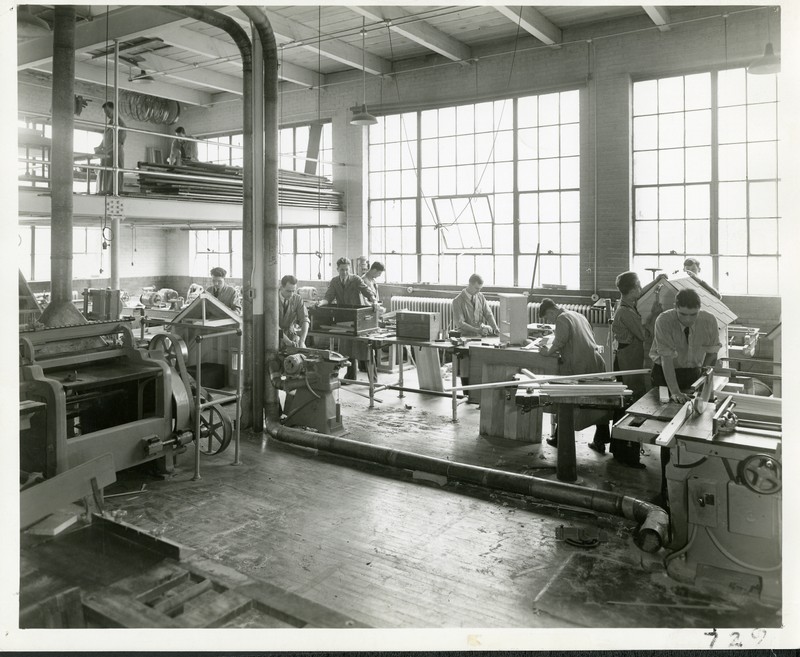
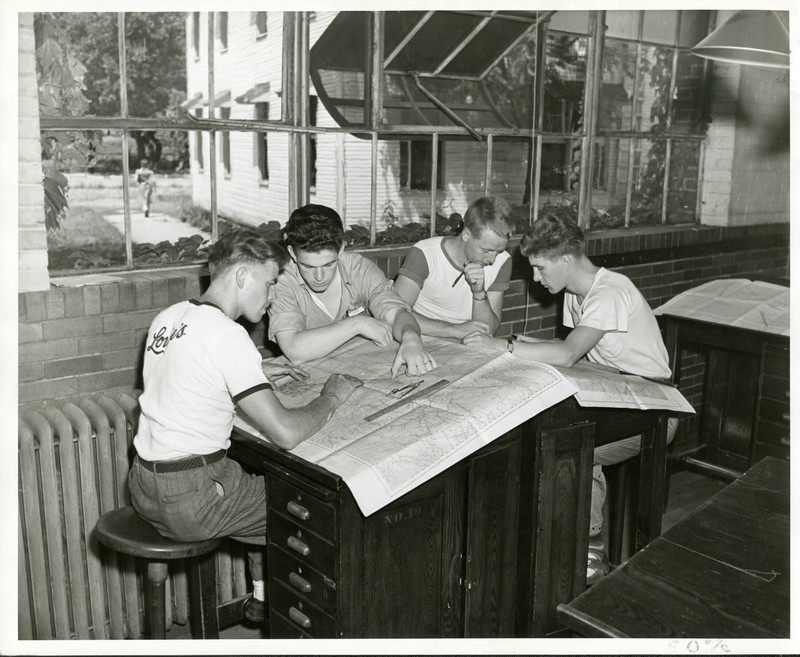
Backstory and Context
Text-to-speech Audio
In April of 1940, the Michigan State Board of Education accepted a gift of around $60,000 from the W.E. Upjohn Unemployment Trustee Corporation for the construction of a new building just west of the Industrial Arts complex. The building was constructed by the Stewart-Kingscott Corporation and officially opened in 1941.
The exterior of the building featured concrete ornamentations of airplane propellers in honor of its purpose as the Aviation Building. The center of the building was utilized for airplane assembly and overhauling, while the office spaces around this central room were in a u-shape. The spaces included an airplane engine testing room, engine repair shop, spray booth, sheet metal shop, instrument laboratory, blueprint rooms, classrooms, and a library. Students had the opportunity to work with five instructional airplanes, including a Parks Biplane with a 175-horsepower engine.
The building was primarily utilized for aviation training until 1967 when it was renovated by Louis C. Kingscott to become the Industrial Tech Building. The last renovation done to the building was completed in 1980 when it was repurposed for the university’s printing services and renamed Brink Printing Services. This name paid homage to Western alumnus Lawrence J. Brink, who served as the director of printing services and contributed to the production of the Western Herald. The new renovations added a stereotype, type shop, pressrooms, composing rooms, wire room, photo studio, and a newspaper press, and the building printed most of the university’s publications until the early 2000s.
Due to its decreased use, the building was torn down to make room for the construction of the Seelye Center which began in 2001. The site was not totally incorporated into the new athletic facilities and is now being used as part of the parking lot for the Physical Plant and stadium.
Sources
Knauss, James O. The First Fifty Years: A History of Western Michigan College of Education, 1903-1953. Kalamazoo, MI: Western Michigan College of Education, 1953.
University Libraries. Rep. Campus Building Inventory - Yearly Summary, n.d.
Stewart-Kingscott Company. Aviation Mechanics Building, May 31, 1941, Map case 12, drawer 6.
“Campus Value up $1,441,000 in Four Years.” Kalamazoo Gazette, October 30, 1911.
Louis C. Kingscott & Associates Incorporated. Aviation Building - Printing Press Conversion, November 15, 1966, Map case 12, drawer 6.
“Building to Be Named for Brink.” Western News. May 19, 1980.
Carlson, Sharon; Glatz, Jason, WMU Facilities Management. “WMU Campus History” [storymap], https://campus-history.library.wmich.edu/index.html. (Accessed February 17, 2022)
